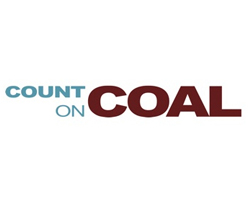New Paper: EPA’s Grid Crisis Collides with Surging Power Demand

April 11, 2024 - The National Mining Association (NMA) has released a new paper on the collision of soaring power demand with rapidly eroding grid reliability driven by the U.S. Environmental Protection Agency’s (EPA) regulatory agenda. This is a familiar story to readers of this blog, but this new white paper connects some important dots on the interconnected challenges bearing down on our supply of power while also providing recommendations for how to responsibly navigate the road ahead.
“This paper clearly shows America’s electricity reality: our ability to keep the lights on now and in the future is in the hands of an agency unwilling to grapple with the facts on the ground and recognize the danger posed by its agenda,” said Rich Nolan, NMA president and CEO. “Surging power demand is here, and despite repeated warnings by electricity grid operators, utilities, electric co-ops and the nation’s energy reliability regulators that we are already in a power supply crisis, EPA is doubling down.”
Specific challenges raised in the paper include:
- Power Demand is Soaring. Power demand is surging due to the rapid growth of data centers, artificial intelligence, the reshoring of heavy industry and electrification of the economy. The North American Electric Reliability Corporation (NERC), which oversees the reliability of the nation’s grid, reported in December that “key measures of future electricity demand and energy needs are rising faster than at any time in recent years, adding to future resource adequacy concerns at a time of unprecedented transformation in the industry.”
- Power Supply is Under Siege. NERC warned in its Long-Term Reliability Assessment that the planned retirement of 83 GW of fossil and nuclear generation over the next decade creates blackout risks for much of the country. The grid monitor also noted that another 30 GW of capacity is expected to close but the plans aren't yet final.
- EPA is Charging Ahead. The EPA is using a suite of rules to force the accelerated retirement of the majority of the nation’s coal fleet by 2032. Despite repeated warnings from the nation’s electricity providers and energy reliability regulators that its agenda poses a direct threat to grid reliability, EPA remains committed to accelerating coal plant retirements.
- New Capacity and Infrastructure Are Not Materializing at Scale. New additions of intermittent renewable energy and high-voltage, interstate transmission lines are not materializing at the speed and scale required to replace dispatchable baseload power plant losses, much less meet rapidly rising power demand. Nationwide, just 251 miles of high-voltage transmission lines were completed last year, a number that has steadily fallen for a decade.
- Natural Gas is a Reliability Liability. While the flexibility of the natural gas fleet is critically important to balancing the variability of intermittent renewable generation, the gas system – from wellhead to power plant – has proven to be extraordinarily susceptible and unreliable during bitter cold.
Policy recommendations from the paper include:
- Bring Transparency to the Challenge. A new, national effort to bring transparency and urgency to mapping the scale and accelerating speed of the nation’s power needs should be a priority.
- Empower Reliability Regulators. Despite years of warnings about rapidly deteriorating grid reliability and a host of threats to the nation’s power supply, the EPA has effectively sidelined reliability regulators from the development of regulations that have a direct impact on grid reliability. A proposed legislative fix exists. The “Guaranteeing Reliable Infrastructure Development Act,” or the “GRID Act,” is a commonsense solution to empower reliability regulators.
- Recognize On-the-Ground Reality. The renewable and transmission infrastructure buildout is facing immense challenges. An honest assessment of these challenges – not dangerously optimistic modelling – of how quickly, affordably and effectively renewable capacity and enabling infrastructure can be added to the grid and meet peak power demand should be the foundation for any rules targeting the nation’s existing fossil fuel generating capacity.
- Reinforce the Bridge. With power demand soaring and the challenges to building and integrating renewable energy and its enabling infrastructure only growing, smart policy should recognize the need for a wider and potentially longer bridge to our energy future.
(7).png)
(7).png)
(5).png)




.gif)























(7).png)
(7).png)
(5).png)